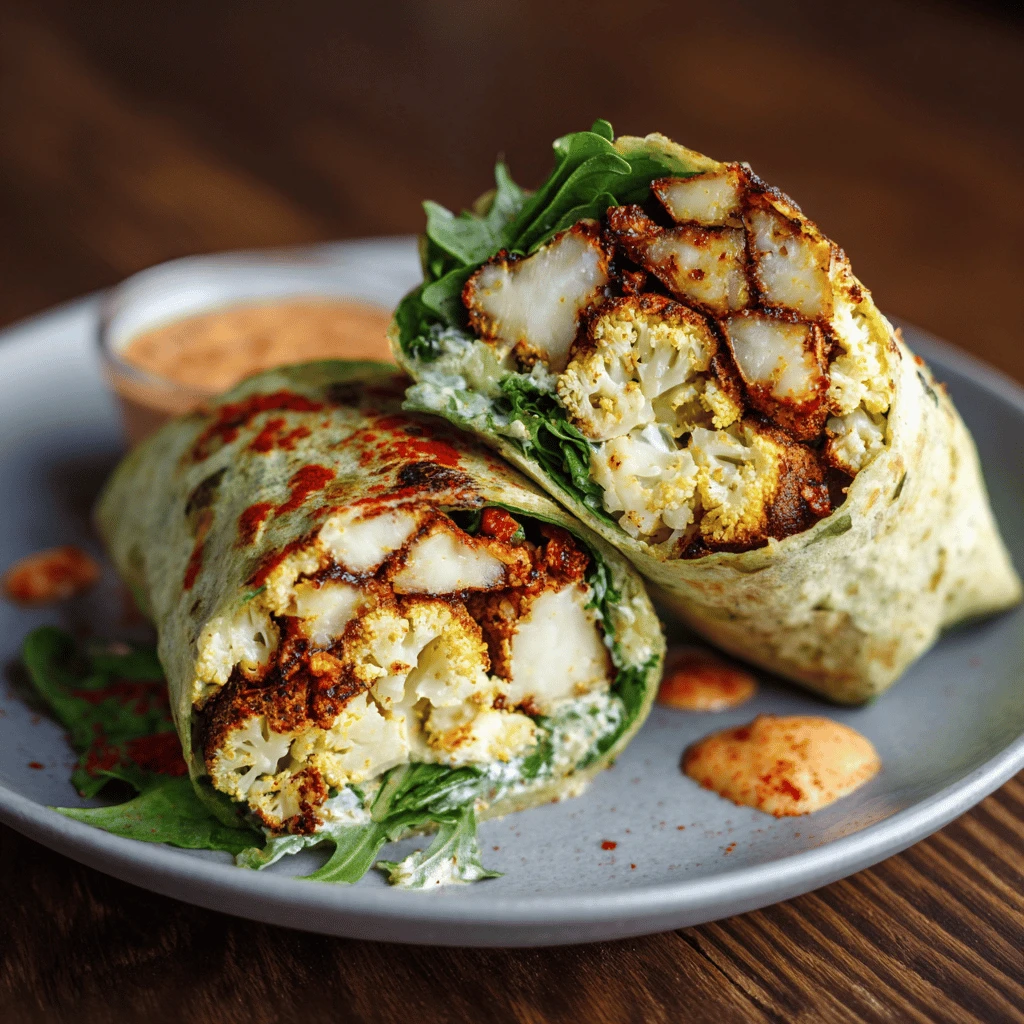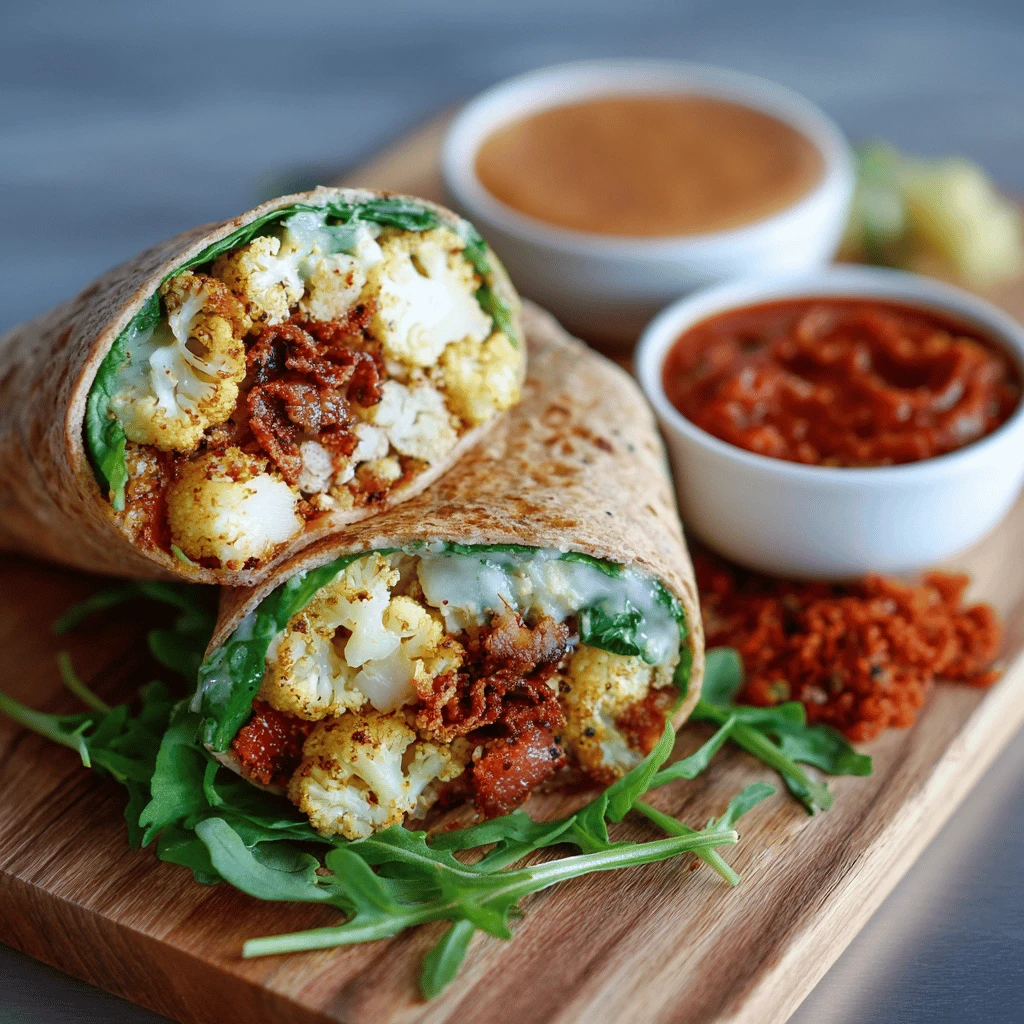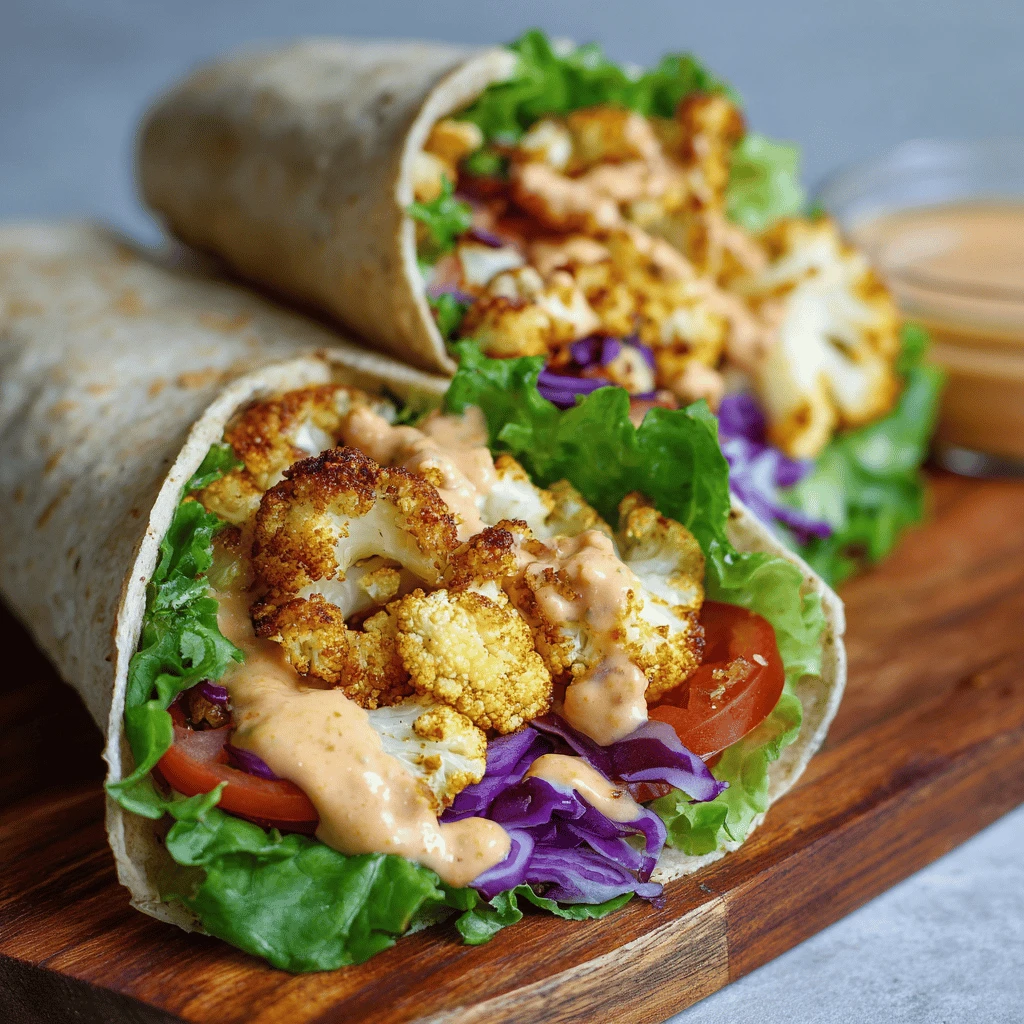High Protein Low Carb Cauliflower Wrap: Your Ultimate Guide
Cauliflower wraps have revolutionized the way we approach low-carb eating. They offer a delightful, grain-free alternative to traditional tortillas, perfect for anyone seeking a healthier lifestyle. This guide will walk you through everything you need to know about high-protein, low-carb cauliflower wraps, from their benefits and nutritional information to delicious recipes and expert tips.
Understanding Cauliflower Wraps: A Low-Carb Revolution
Cauliflower, once relegated to side dish status, has emerged as a culinary superstar. Its mild flavor and versatile texture make it an ideal base for a variety of dishes, including pizza crusts, rice substitutes, and, of course, wraps.
What Makes Cauliflower Wraps Special?
The appeal of cauliflower wraps lies in their nutritional profile. They are naturally low in carbohydrates and calories, making them a great choice for those following ketogenic, paleo, or low-carb diets. They are also a good source of vitamin C, vitamin K, and fiber.
Compared to traditional wheat tortillas, cauliflower wraps offer a significant reduction in carbohydrate intake. This can lead to improved blood sugar control, weight management, and overall health.
High Protein Considerations
While cauliflower itself isn’t particularly high in protein, you can easily boost the protein content of your wraps by adding protein-rich fillings. Some excellent choices include:
- Grilled Chicken or Turkey: Lean protein options that are low in fat.
- Lean Ground Beef or Turkey: Cooked and seasoned, adding flavor and protein.
- Black Beans or Lentils: Plant-based protein sources that are also high in fiber.
- Greek Yogurt: Can be used as a creamy, high-protein sauce or spread.
- Eggs (Scrambled or Hard-Boiled): A versatile and affordable protein option.
- Tofu or Tempeh: Plant-based choices for vegetarians and vegans.
- Cottage Cheese: Another dairy option that is high in protein and low in carbs.
Making Your Own High-Protein Cauliflower Wraps
While store-bought cauliflower wraps are convenient, making your own allows for customization and ensures you know exactly what ingredients are being used. This section will guide you through the process, step-by-step.
The Basic Cauliflower Wrap Recipe
Ingredients:
- 1 medium head of cauliflower, riced
- 1 large egg
- 1/4 cup shredded mozzarella cheese (optional, for binding)
- Salt, pepper, and any desired seasonings (garlic powder, onion powder, Italian herbs)
Instructions:
1. Prepare the Cauliflower: Rice the cauliflower using a food processor or a box grater.
2. Steam or Microwave: Steam the riced cauliflower for about 5-7 minutes, or microwave for 3-5 minutes, until softened. This helps remove excess moisture.
3. Remove Excess Moisture: Place the cooked cauliflower in a clean kitchen towel or cheesecloth and squeeze out as much water as possible. This is crucial for achieving a firm wrap.
4. Combine Ingredients: In a bowl, mix the squeezed cauliflower with the egg, mozzarella cheese (if using), and seasonings.
5. Form the Wraps: Preheat a non-stick skillet over medium heat. Place spoonfuls of the cauliflower mixture onto the skillet and flatten them into thin, round shapes.
6. Cook the Wraps: Cook for about 3-5 minutes per side, or until golden brown and firm.
7. Cool and Use: Let the wraps cool slightly before using. They can be used immediately or stored in the refrigerator for later use.
Tips for Perfect Cauliflower Wraps
- Moisture is the Enemy: The most important factor in making successful cauliflower wraps is removing as much moisture as possible. Don’t skip the squeezing step!
- Don’t Overcook: Overcooking can make the wraps brittle and prone to cracking.
- Use a Non-Stick Skillet: This will prevent the wraps from sticking and make them easier to flip.
- Add Cheese for Binding: Mozzarella cheese acts as a binder, helping the wraps hold their shape. You can also experiment with other cheeses.
- Get Creative with Seasonings: Add your favorite herbs, spices, and seasonings to customize the flavor of your wraps.
Enhancing Protein Content Directly in the Wrap
While adding protein-rich fillings is the primary way to boost protein, you can also incorporate protein powders or other protein sources directly into the wrap mixture.
- Protein Powder: A scoop of unflavored or mildly flavored protein powder (whey, casein, or plant-based) can be added to the mixture. Adjust the amount of liquid (egg) as needed to maintain a good consistency.
- Egg Whites: Instead of a whole egg, use two egg whites for a slightly higher protein content and lower fat.
Delicious High-Protein, Low-Carb Cauliflower Wrap Recipes
Now that you know how to make the wraps, let’s explore some delicious high-protein, low-carb filling ideas.
Chicken Caesar Cauliflower Wraps
Ingredients:
- Cauliflower wraps (recipe above)
- Grilled chicken breast, sliced
- Romaine lettuce, chopped
- Parmesan cheese, shaved
- Caesar dressing (low-carb or homemade)
Instructions:
1. Assemble the wraps by layering romaine lettuce, grilled chicken, and parmesan cheese onto each wrap.
2. Drizzle with Caesar dressing.
3. Fold or roll the wraps and serve.
Spicy Shrimp Cauliflower Wraps
Ingredients:
- Cauliflower wraps (recipe above)
- Cooked shrimp, peeled and deveined
- Avocado, sliced
- Red cabbage, shredded
- Sriracha mayo (low-carb or homemade)
- Lime wedges
Instructions:
1. Toss the shrimp with a little olive oil and your favorite spices (chili powder, cumin, garlic powder).
2. Assemble the wraps by layering red cabbage, avocado, and spiced shrimp onto each wrap.
3. Drizzle with sriracha mayo.
4. Serve with lime wedges.
Mediterranean Cauliflower Wraps
Ingredients:
- Cauliflower wraps (recipe above)
- Ground lamb or beef, cooked and seasoned with Mediterranean spices
- Cucumber, diced
- Tomato, diced
- Red onion, thinly sliced
- Feta cheese, crumbled
- Tzatziki sauce (low-carb or homemade)
Instructions:
1. Assemble the wraps by layering cooked meat, cucumber, tomato, red onion, and feta cheese onto each wrap.
2. Drizzle with tzatziki sauce.
3. Fold or roll the wraps and serve.
Breakfast Cauliflower Wraps
Ingredients:
- Cauliflower wraps (recipe above)
- Scrambled eggs
- Cooked bacon or sausage
- Shredded cheddar cheese
- Avocado slices
- Salsa (optional)
Instructions:
1. Assemble the wraps by layering scrambled eggs, bacon or sausage, cheddar cheese, and avocado slices onto each wrap.
2. Add salsa if desired.
3. Fold or roll the wraps and serve.
Health Benefits and Nutritional Information
Cauliflower wraps offer a multitude of health benefits, especially when incorporated into a balanced, high-protein, low-carb diet.
Nutritional Breakdown
A typical cauliflower wrap (made with the basic recipe above) contains approximately:
- Calories: 50-70
- Carbohydrates: 3-5 grams
- Fiber: 1-2 grams
- Protein: 4-6 grams
- Fat: 2-4 grams
These values will vary depending on the size of the wrap and any additional ingredients used in the recipe. Remember to factor in the nutritional content of your fillings when calculating your overall macronutrient intake.
Health Advantages
- Weight Management: Low in calories and carbohydrates, making them a good choice for weight loss or maintenance.
- Improved Blood Sugar Control: The low carbohydrate content helps stabilize blood sugar levels, beneficial for those with diabetes or insulin resistance.
- Increased Fiber Intake: Fiber promotes digestive health and helps you feel full and satisfied.
- Rich in Vitamins and Minerals: Cauliflower is a good source of vitamin C, vitamin K, and folate.
- Gluten-Free and Grain-Free: Suitable for individuals with gluten sensitivities or celiac disease.
- Versatile and Customizable: Can be adapted to a wide variety of dietary preferences and cuisines.
Potential Drawbacks
- Lower in Protein: Compared to some other wrap alternatives, cauliflower wraps are naturally lower in protein, necessitating protein-rich fillings.
- Texture: Some people may find the texture of cauliflower wraps slightly different from traditional tortillas. However, with proper preparation, the texture can be quite enjoyable.
- Can be Difficult to Make: Achieving the perfect texture and consistency can take practice.
Expert Tips and Tricks for Mastering Cauliflower Wraps
Making perfect cauliflower wraps can be a bit of an art. Here are some expert tips and tricks to help you achieve consistent results:
Dealing with Moisture
As mentioned earlier, moisture is the biggest challenge when making cauliflower wraps. Here are some strategies to combat it:
- Thoroughly Cook the Cauliflower: Ensure the cauliflower is fully cooked before squeezing out the moisture.
- Use a High-Quality Towel: A clean kitchen towel or cheesecloth works best for squeezing.
- Squeeze in Batches: If you have a large amount of cauliflower, squeeze it in smaller batches to ensure maximum moisture removal.
- Consider Roasting: Roasting the riced cauliflower before squeezing can help dry it out further. Spread the riced cauliflower on a baking sheet and roast at 350°F (175°C) for about 15-20 minutes, or until slightly dry.
Achieving the Right Texture
- Don’t Overmix: Overmixing the cauliflower mixture can result in a gummy texture. Mix just until the ingredients are combined.
- Adjust the Egg: If the mixture seems too wet, add a little more riced cauliflower or a tablespoon of almond flour. If it seems too dry, add a little more egg.
- Use a Binder: Mozzarella cheese, almond flour, or psyllium husk powder can help bind the wraps together and improve their texture.
Cooking Techniques
- Heat Control: Maintain a medium heat to prevent the wraps from burning or sticking to the skillet.
- Patience is Key: Allow the wraps to cook undisturbed for a few minutes on each side before flipping.
- Use a Spatula: A thin, flexible spatula is helpful for flipping the wraps without tearing them.
- Experiment with Different Skillets: Some skillets work better than others. Cast iron skillets or non-stick pans are generally good choices.
Storage and Reheating
- Store in the Refrigerator: Cooked cauliflower wraps can be stored in the refrigerator for up to 3 days.
- Layer with Parchment Paper: To prevent the wraps from sticking together, layer them with parchment paper.
- Reheat in a Skillet or Microwave: Reheat the wraps in a skillet over low heat or in the microwave for a few seconds until warmed through.
Frequently Asked Questions (FAQ)
Are cauliflower wraps really low carb?
Yes, they are significantly lower in carbs than traditional flour tortillas. A typical cauliflower wrap contains only a few grams of net carbs.
Can I freeze cauliflower wraps?
Yes, you can freeze them. Cook them as directed, let them cool completely, and then wrap them individually in plastic wrap or freezer bags. They can be stored in the freezer for up to 2 months. Thaw them in the refrigerator before reheating.
What can I use instead of eggs in cauliflower wraps?
If you have an egg allergy or are following a vegan diet, you can use a flax egg (1 tablespoon of ground flaxseed mixed with 3 tablespoons of water and left to sit for 5 minutes) or a chia egg (same proportions as flax egg).
How can I make my cauliflower wraps more flavorful?
Experiment with different seasonings, such as garlic powder, onion powder, Italian herbs, chili powder, or cumin. You can also add a small amount of grated Parmesan cheese or nutritional yeast for extra flavor.
Are store-bought cauliflower wraps as healthy as homemade?
Store-bought cauliflower wraps can be a convenient option, but it’s important to check the ingredient list. Some brands may add unnecessary additives or preservatives. Homemade wraps allow you to control the ingredients and ensure they are made with whole, unprocessed foods.
Why are my cauliflower wraps falling apart?
This is usually due to excess moisture. Make sure to squeeze out as much water as possible from the cooked cauliflower. Adding a binder, such as cheese or almond flour, can also help.




